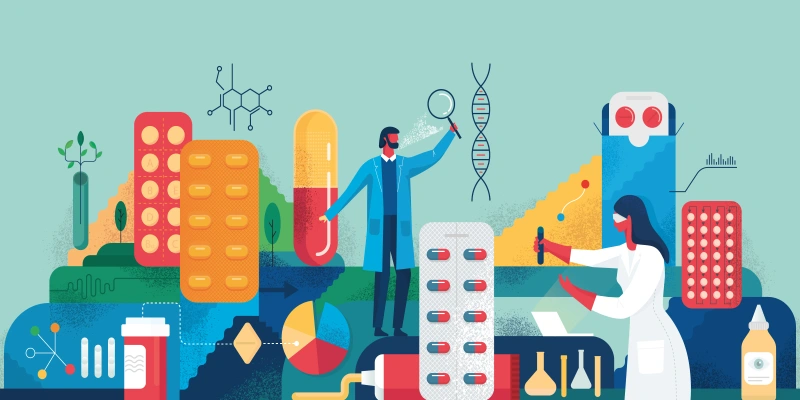Genetic testing is an effective and reliable method for providing a definitive diagnosis in neuromuscular disease. It can also be used to manage and provide valuable information for patients and their families regarding prognosis and risk. However, incorporating genetic testing and interpretation in the clinical setting can be challenging due to logistical, educational, and financial issues.
“With the increased access to genetic testing and accessibility, the volume of testing has gone up and it is difficult to keep up with interpretation especially if when patients are going to second and third tier testing,” said Jennifer M. Martinez-Thompson, MD is an adult neurologist with a specialty interest in neuromuscular and peripheral nerve disorders at the Mayo Clinic. “We want to know how best to connect patients with neuromuscular disease to treatments and also to clinical trials if they are available.”
Dr. Martinez-Thompson discussed a potential framework for integrating genetic testing into their neuromuscular disease clinic during the 2025 American Association of Neuromuscular & Electrodiagnostic Medicine (AANEM) annual meeting.
One of the first steps they have taken is to integrate a genetics counselor into the clinic. “We felt it would help with consistent pre-test counseling, facilitate patient consent, requisition forms, and test ordering—basically help to streamline the work flow,” said Dr. Martinez-Thompson.
Their experience of integrating a genetic counselor into the clinic has been very positive. Communication between the genetic counselor and the clinicians is frequent, and they help prioritize access and keep up with testing volume. In-depth patient education on genetic testing and post test counseling has increased, along with faster communication of test results.
Genetic testing, access and counseling are more vital than ever as an increasing number of gene and disease modifying treatments have become available across a range of disorders. “But while we continue to see evolution in the available of molecular therapeutics, there is one constant and that is the cost,” said Dr. Martinez-Thompson. “Even when adjusted for 2025, the cost remains really high for these agents. They range from $145,000 to over $2 million annually, in terms of total cost.”
Not only are the costs high, but logistics of obtaining the drugs can also be challenging. Institutions purchase these medications upfront from specialty pharmacies and then bill and collect from the patient’s insurer (buy and bill). Medicare and Medicaid do not accept direct reimbursement from specialty pharmacies, so there is a risk of non-payment as Medicare does not have a pre-approval process. Many institutions also do not allow the “buy and bill” method, and smaller facilities would be at serious financial risk with delayed/denied payments.
“But there are many current therapies for neuromuscular disorders, with more on the way, and these will have similar financial issues, complicated enrollment processes and specific monitoring considerations unique to these therapies,” said Dr. Martinez-Thompson. “It is difficult and time consuming for physicians and nurses to navigate the process. Therefore, establishing a model for the delivery of these therapeutics can help centralize the process and expedite therapy approval.”
She explained that they are exploring a potential framework for this, that is “nurse centric.” The nurse would be the liaison from the beginning of the process through approval. Another part of the framework would be to develop drug specific packets for these therapeutics that explain the process from diagnosis to drug delivery.
“We have had the nursing staff integrated into our clinic visits,” said Dr. Martinez-Thompson. “We have them at the point of care and they can provide patient education on therapeutics, assist with the enrollment process, and be a contact person for the patient.”
Other parts of the framework include the development of a patient repository that allows for easier access to drug follow up and monitoring; the development of an inventory of clinical trials; and for the nurse to be the primary liaison for insurance companies and specialty pharmacies.
However, several barriers must be overcome to develop the framework. “The biggest challenge is the upfront investment and the degree of nursing support that is needed,” she said. “We also need time to develop packet content and patient repositories, and we will also need to revisit the process each time new therapeutic available.”
She added that this framework is best suited to tertiary or large referral centers, as some treatments require on site administration. However, this may stretch the bandwidth of these centers to support the clinical needs of patient referrals, “so this model will work best if there is continued care local for interim needs between treatments/follow up monitor sessions,” noted Dr. Martinez-Thompson.
Dr Martinez-Thompson has no disclosures.
Genetic Testing and Novel Molecular Therapeutics in the Neuromuscular Clinic. Presented at: 2025 American Association of Neuromuscular & Electrodiagnostic Medicine (AANEM) annual meeting; October 29-November 2, 2025; San Francisco
Image by GoodStudio / Shutterstock





